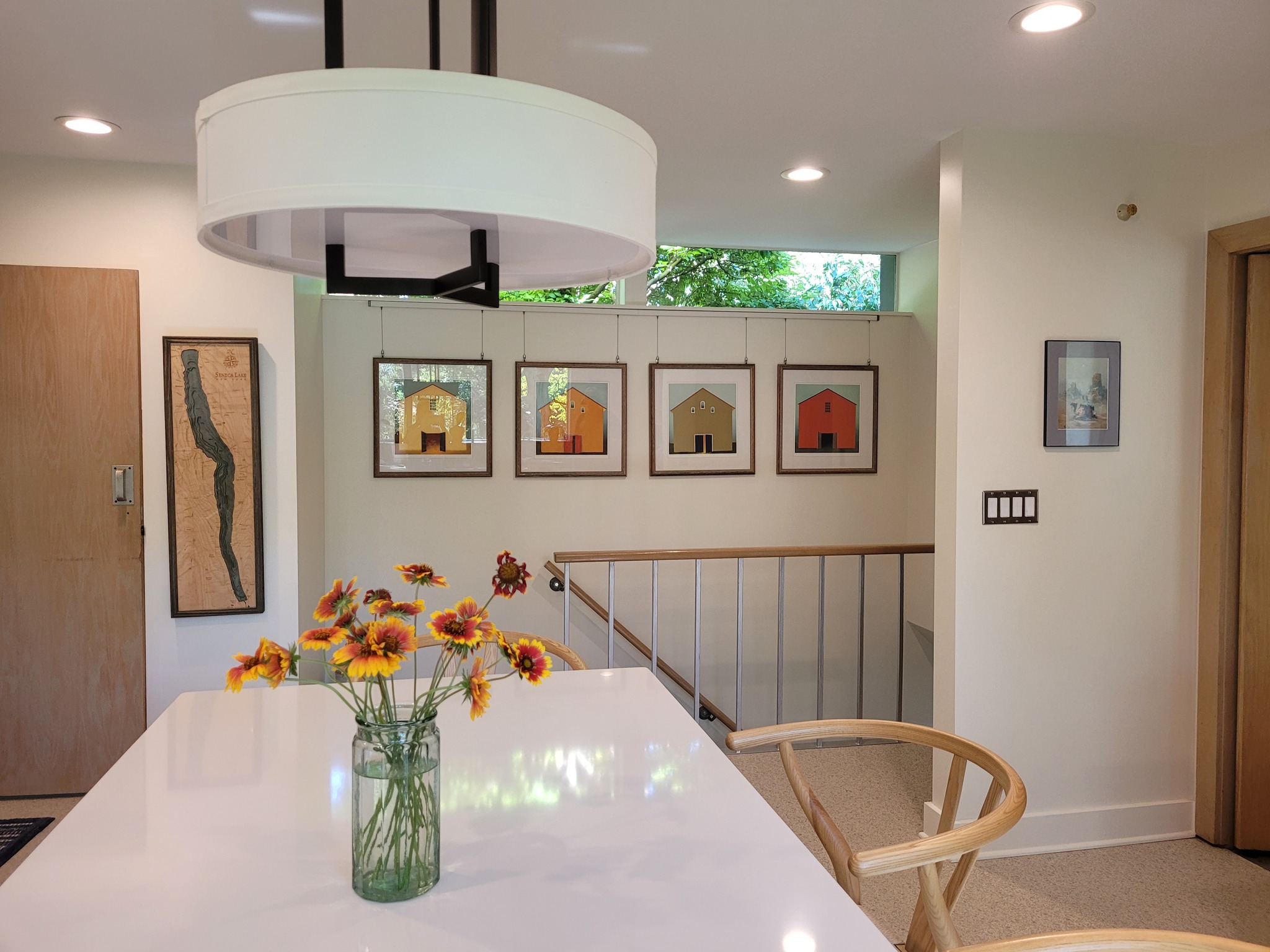Artwork brings a distinct personality to any space, but it’s not just about the canvas. The way art is positioned, the lighting that illuminates it, and how it blends with its surroundings all play a vital role in the impact created. Together, these elements create a harmonious scene that enhances the overall experience. Art is more than just a visual expression; it’s a creative force that elevates the ambience and adds personalisation to any environment.
The act of hanging art involves several considerations, each important in how the art is perceived.
Understanding Wall Space and Art Size
To begin, take a moment to assess the available wall space. Consider the size and dimensions of the wall, as this will play a key role in determining the artwork that will best suit the area. For larger walls, you can choose a few larger pieces or assemble an arrangement of smaller ones. This can create a captivating focal point and make a bold statement. On the other hand, if you have small and narrow walls, opting for a single, smaller piece might be more appropriate, adding a touch of elegance and creating a sense of balance in the space.
Remember, the size of the artwork should aPicturelways complement the wall it is displayed on, ensuring that it enhances the overall aesthetic without overpowering it. Considering these factors will help you create a harmonious and visually pleasing arrangement in your space.
The Importance of Frames
Frames aren’t merely protective edges for your art; they play an important role in the overall presentation of the artwork. A well-chosen frame can enhance the style and aesthetic of both the artwork itself and the room in which it is displayed. For instance, a heavy baroque frame with intricate detailing might overpower the clean lines and minimalist design of a sleek, modern living space. On the other hand, a simple metal frame could appear incongruous amidst the ornate furnishings and traditional decor of a classically styled room. Therefore, it is crucial to carefully consider the compatibility between the frame, the art’s style, and the room’s overall decor to create a harmonious and visually pleasing space.
Balancing Art with Interior Décor
Art doesn’t exist in a vacuum. It should play nicely with your furniture, colour scheme, and other decorative elements. By considering your artwork’s colours, textures, and styles, you can create a harmonious blend that complements or contrasts with the rest of the room.
The careful selection and arrangement of artistic pieces contribute to establishing a visual balance, ultimately enhancing your space.
What You Need to Know About Hanging Art
Hanging art is an art in itself. Here are some key points the experts at Gallery System recommend you consider:
- Positioning is Key: The centre of your artwork should be at eye level, typically 57 inches from the floor. This gallery-standard height provides a consistent visual line across a space.
- Lighting Matters: Proper lighting will bring out the best in your artwork. Whether natural light or spotlights, ensure your art is well-lit without causing glare or fading.
- Grouping Artworks: If creating a gallery wall, place the largest piece first and then arrange smaller pieces around it. Keep a consistent space between each for a cohesive look.
- Think About Themes: Group by theme, colour, or medium to create a thoughtful and engaging display. This can create a visual dialogue between pieces and offer viewers a more profound experience.
How to Hang Your Art?
Hanging your art goes beyond simply putting a nail in the wall:
- Choose the Right System: A professional art hanging system, like those offered by The Gallery System, provides a versatile and stable method for displaying various art sizes and weights.
- Consider the Surface: Different wall materials require different hanging methods. Make sure to use the appropriate fixtures for drywall, plaster, or brick.
- Use Tools Wisely: A level, measuring tape, and pencil should be used to mark and measure the exact points for hanging, ensuring your artwork is straight and evenly spaced.
Conclusion
The craft of hanging art is a crucial aspect of interior design and personal expression. It requires careful consideration of many factors, from placement and lighting to theming and spacing. By understanding these fundamental principles and using a reliable gallery system, anyone can exhibit their artwork in an aesthetically pleasing and structurally sound manner. Whether you are a seasoned collector or a casual enthusiast, the proper techniques and tools can help you make the most of your art collection, turning your space into a personal gallery that inspires and delights.





